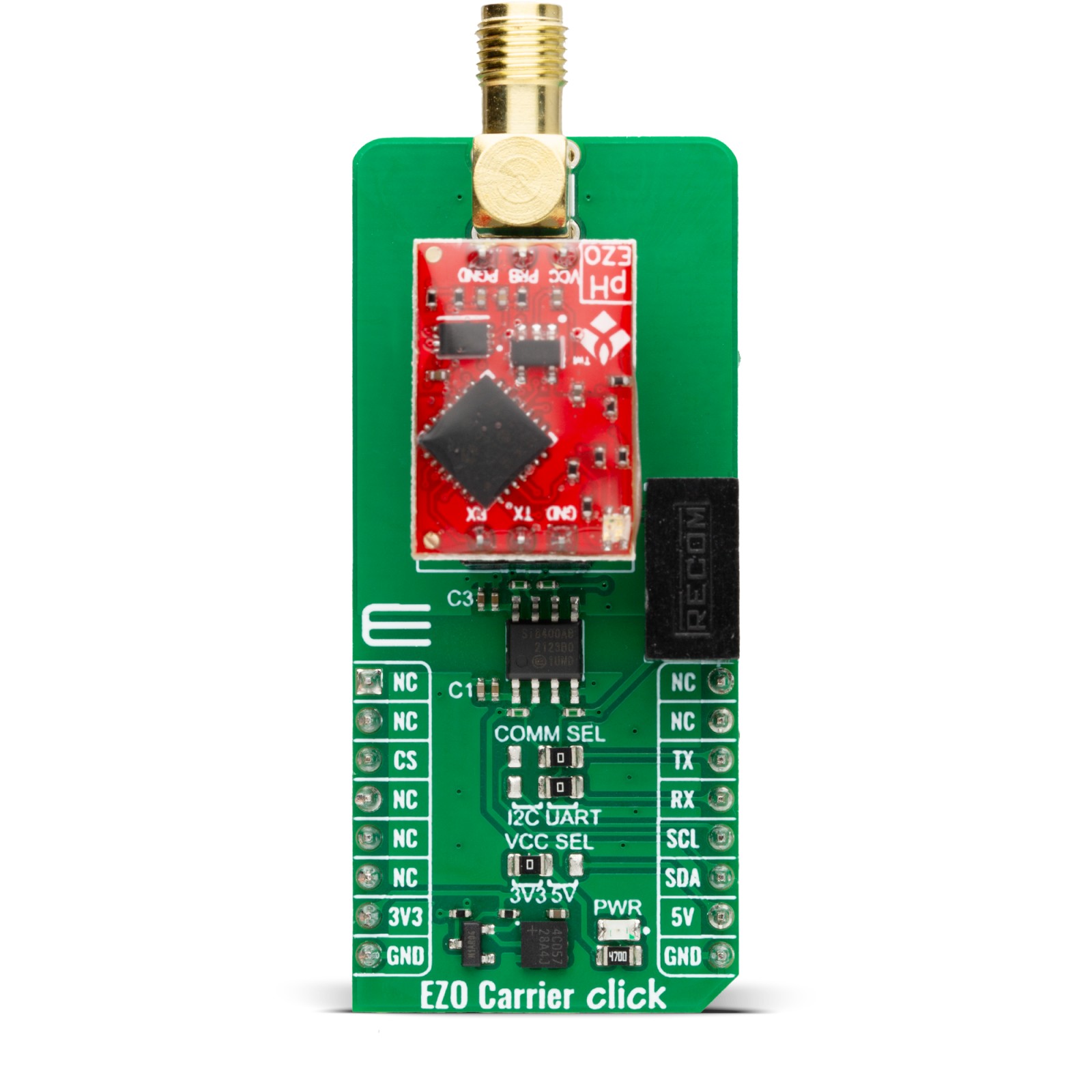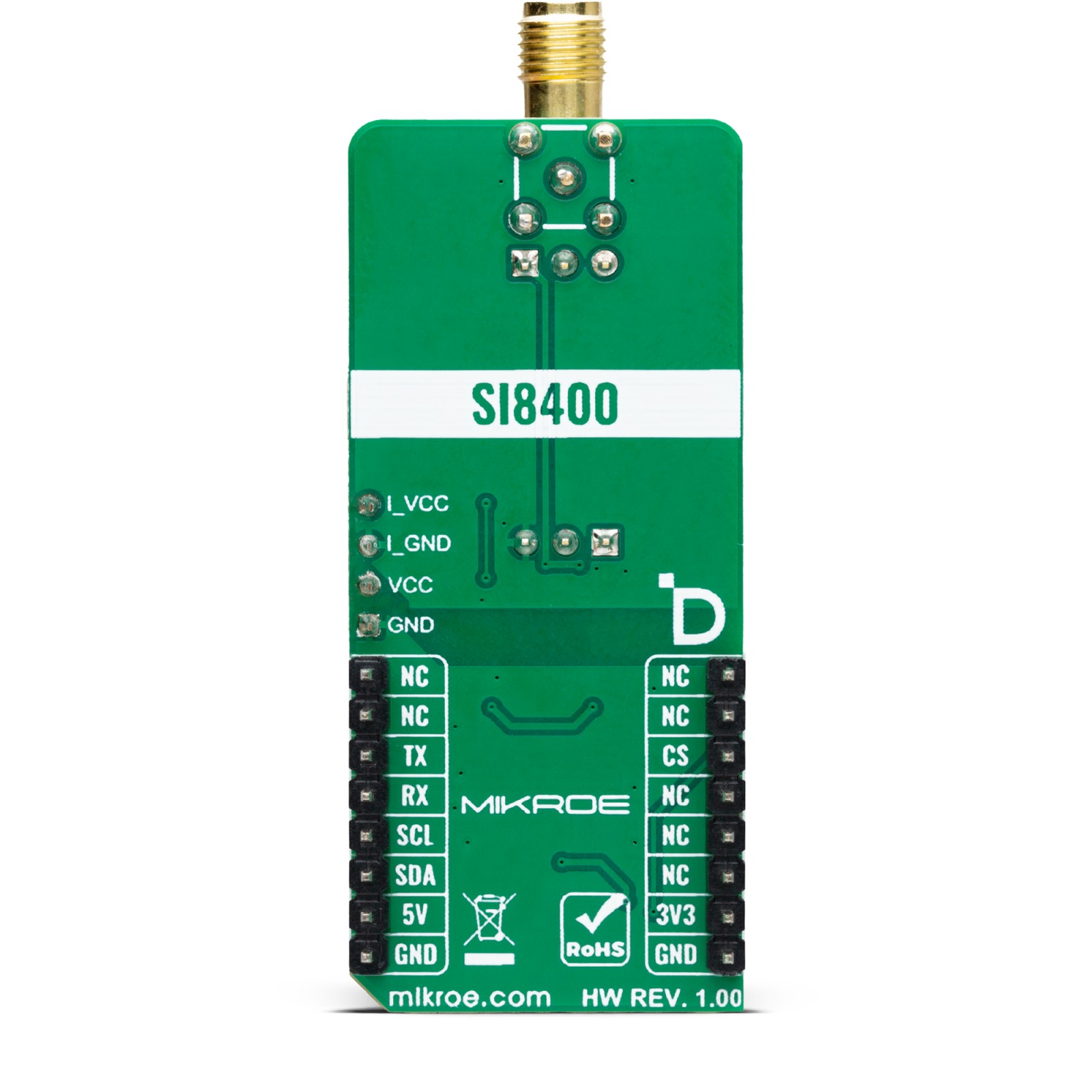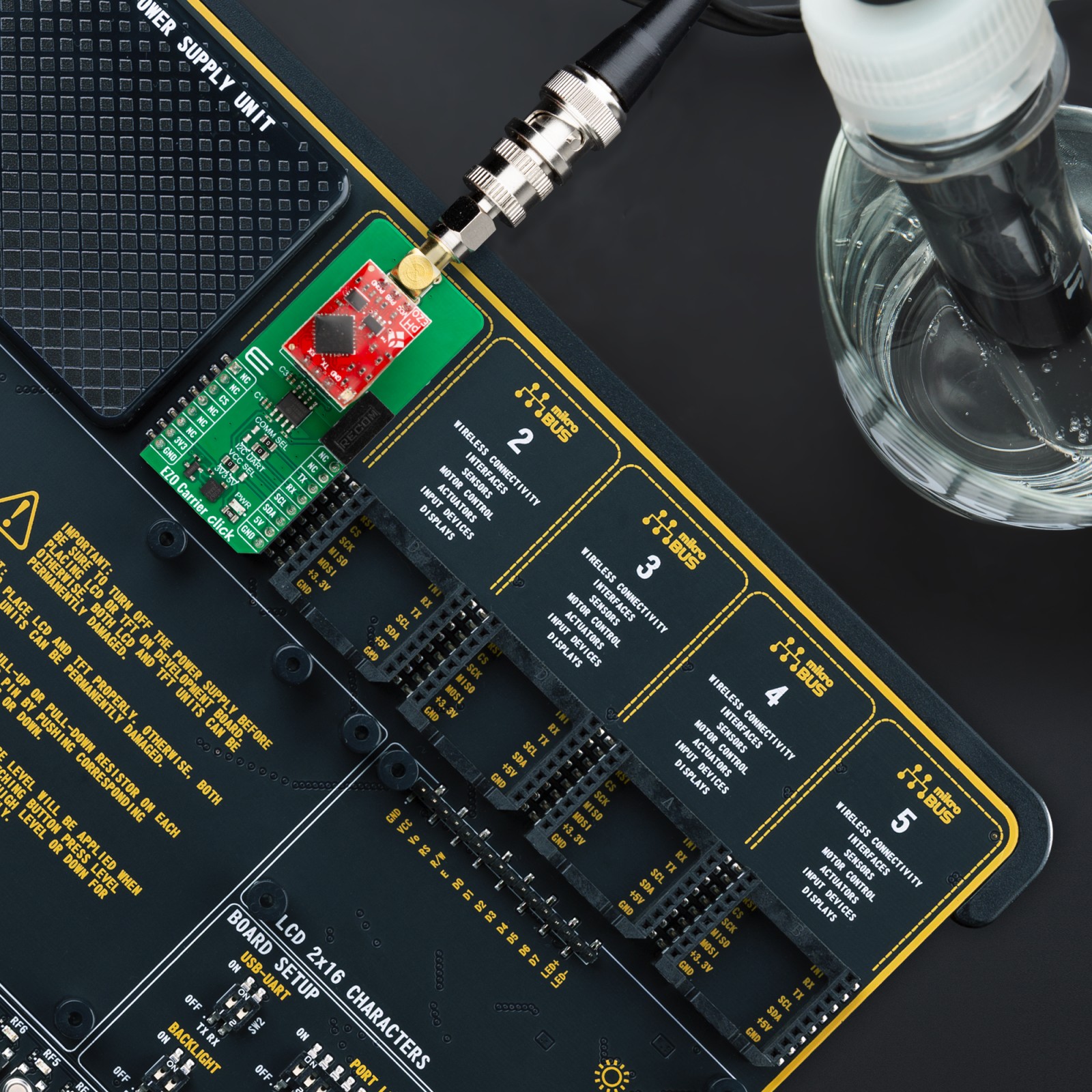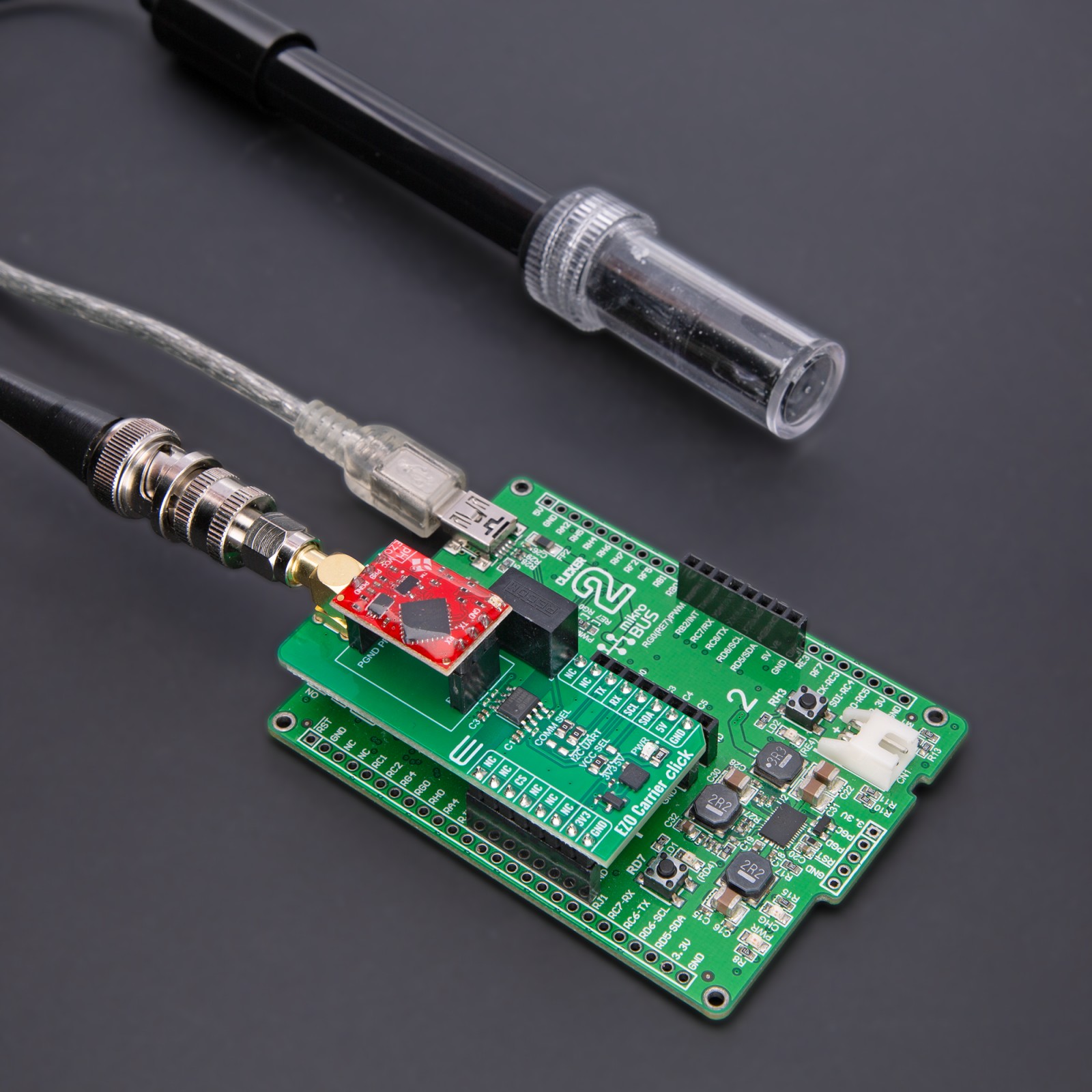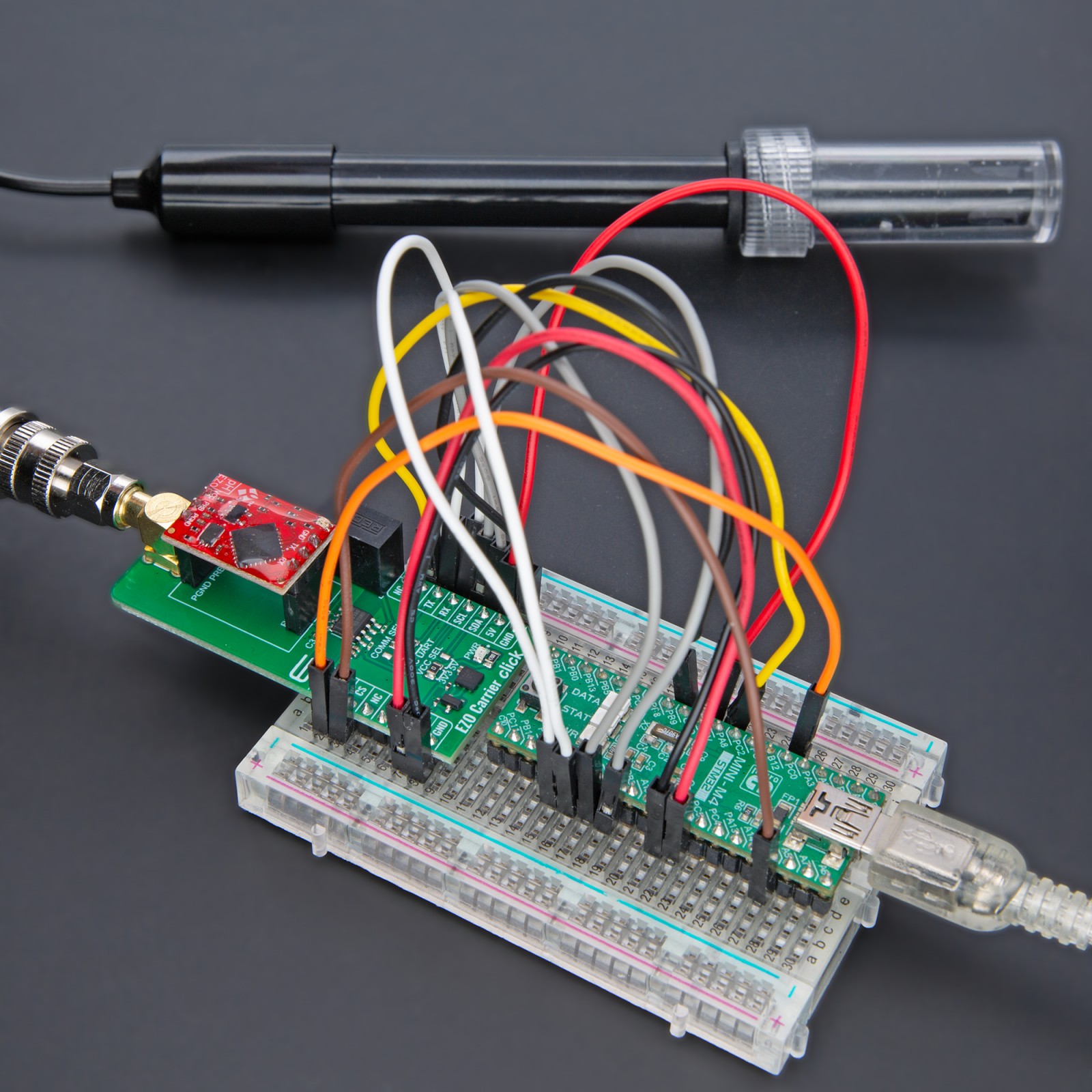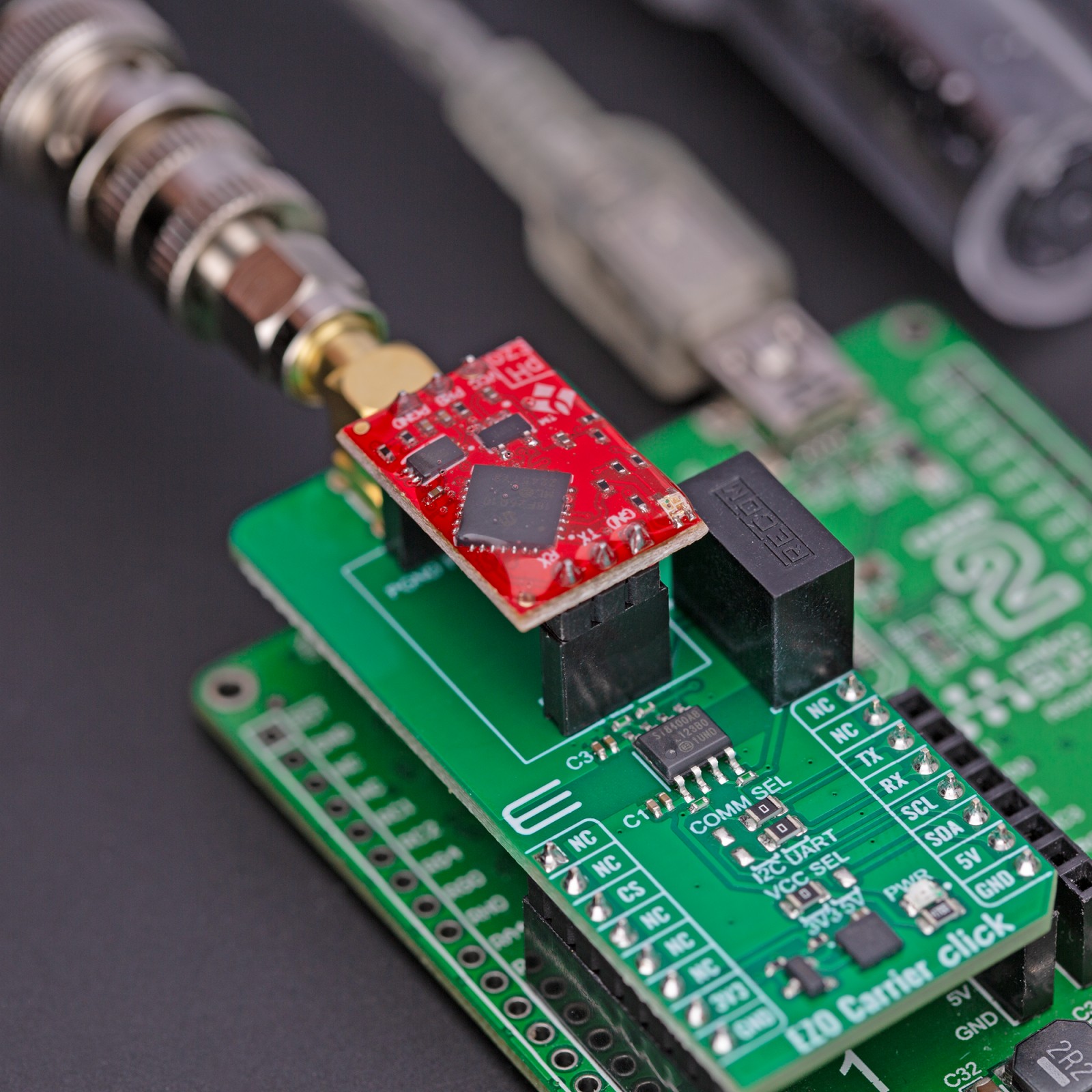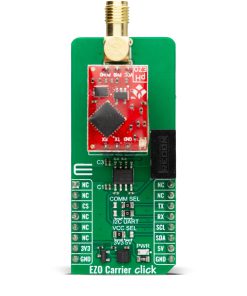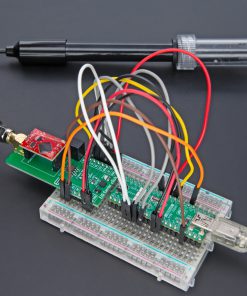Subtotal: R2,700.00
EZO Carrier Click – pH
R2,600.00 ex. VAT
EZO Carrier Click – pH is a compact add-on board that allows you to measure the potential of hydrogen (the power of hydrogen) in your application. This board features the EZO™ pH, a pH measurement interface circuit board from Atlas Scientific. The EZO™ pH is a small additional board that comes with the carrier board and allows you to read the pH values of the solvent in a range of 0.001 up to 14.000, in a resolution of 0.001 and accuracy +/-0.002. The EZO™ pH allows readings in a maximum of one reading per second. This Click board™ makes the perfect solution for the development of food-grade analyzers, chemical products analyzers, water quality measuring devices, and more. It is compatible with various galvanic measurement probes, such as the ph Electrode with BNC connector.
EZO Carrier Click – pH is fully compatible with the mikroBUS™ socket and can be used on any host system supporting the mikroBUS™ standard. It comes with the mikroSDK open-source libraries, offering unparalleled flexibility for evaluation and customization. What sets this Click board™ apart is the groundbreaking ClickID feature, enabling your host system to seamlessly and automatically detect and identify this add-on board.
Stock: Lead-time applicable.
| 5+ | R2,470.00 |
| 10+ | R2,405.00 |
| 15+ | R2,340.00 |
| 20+ | R2,275.00 |

 GSM/GNSS Click
GSM/GNSS Click  3D Motion Click
3D Motion Click 